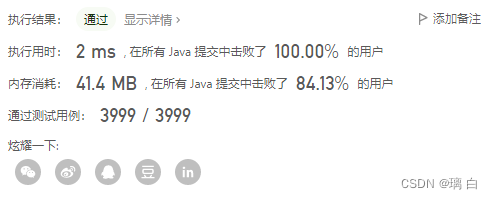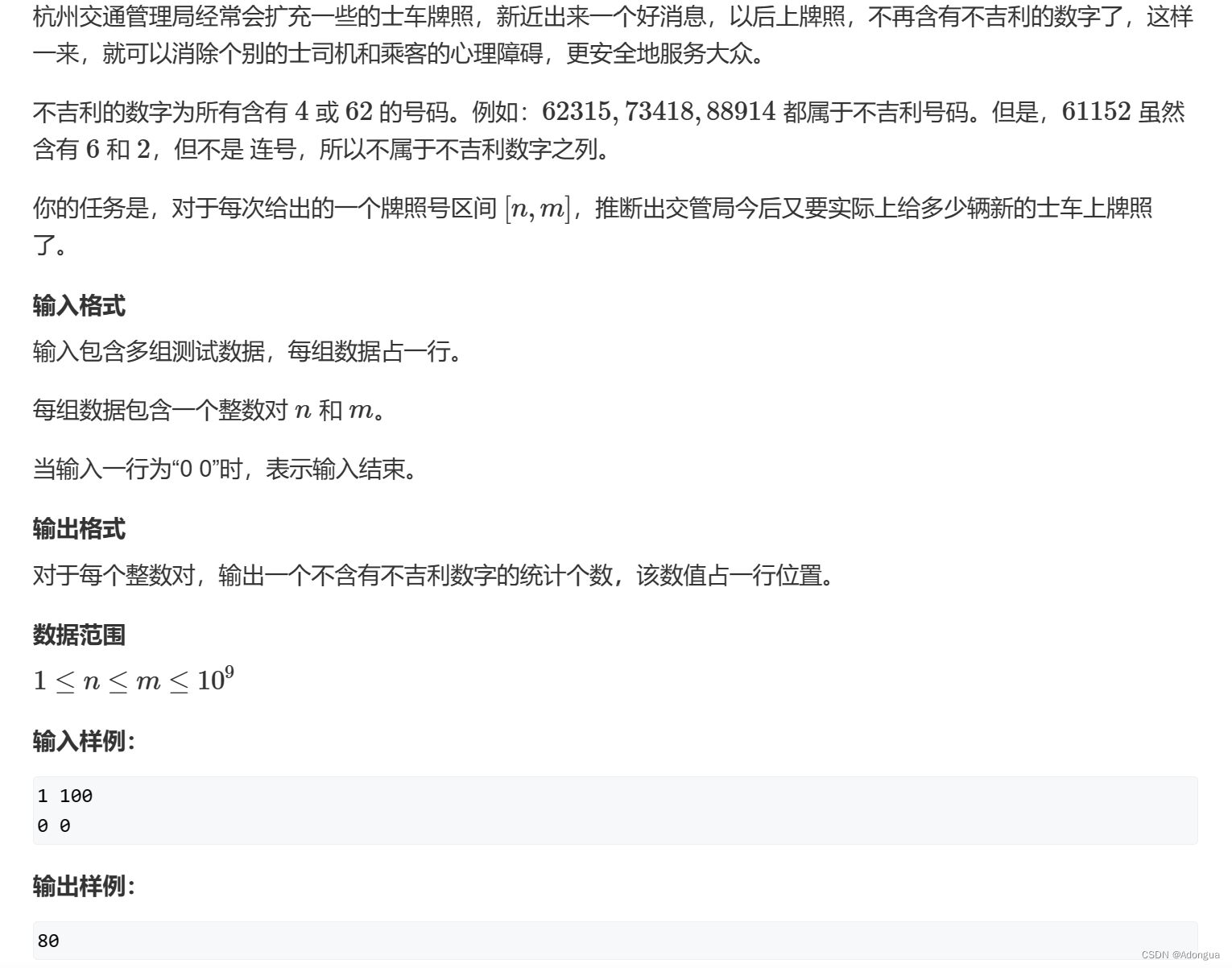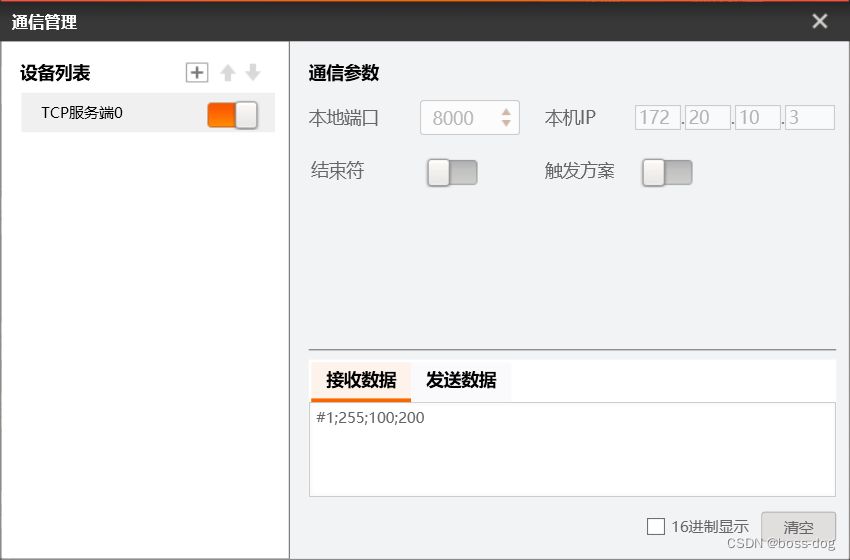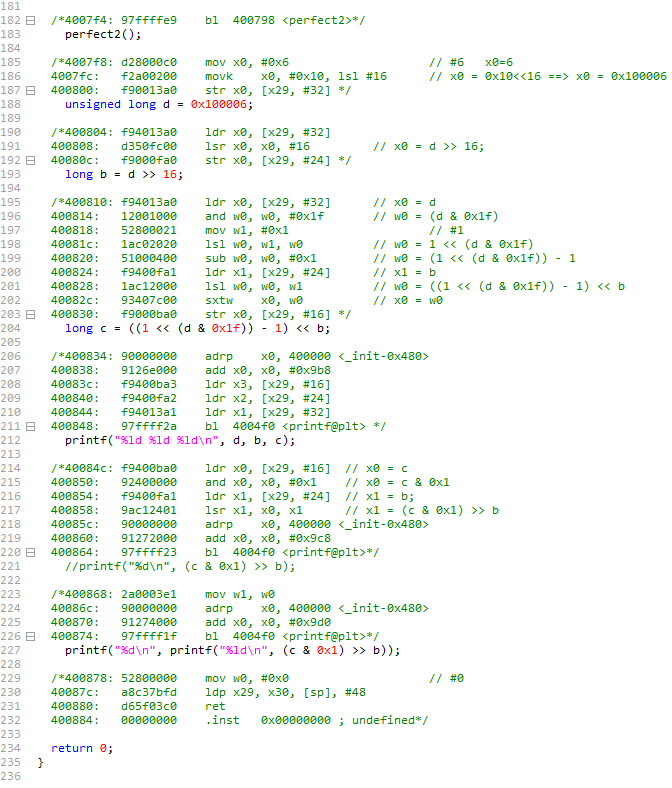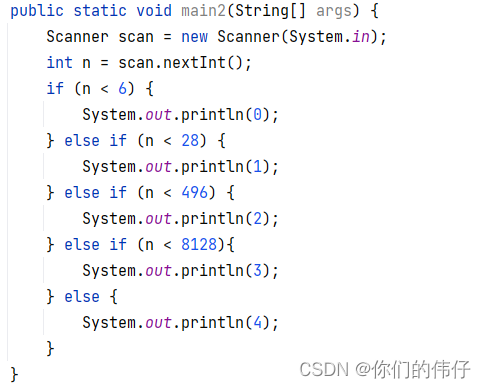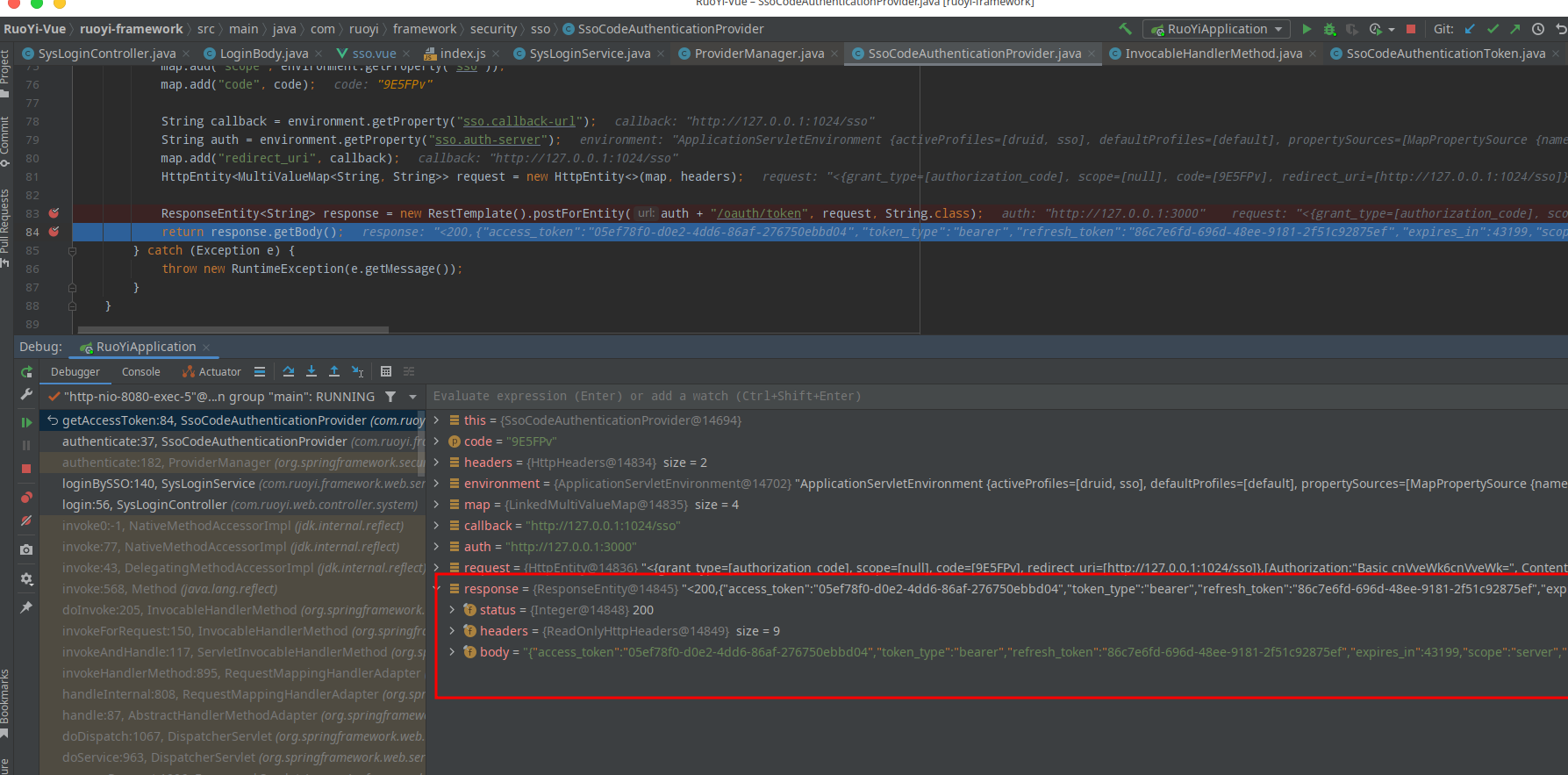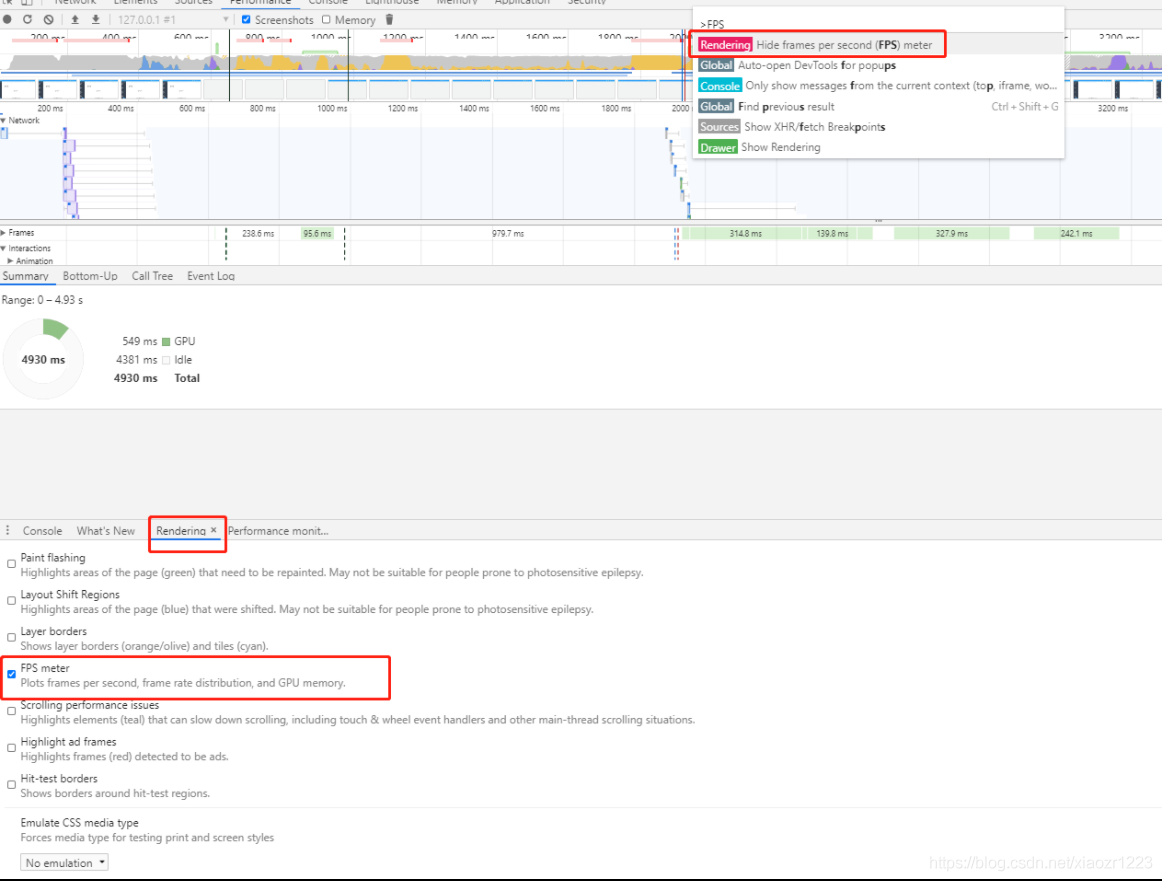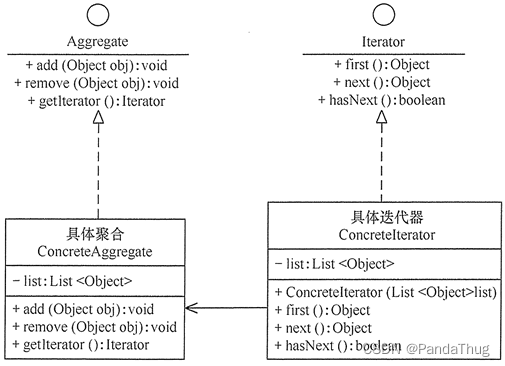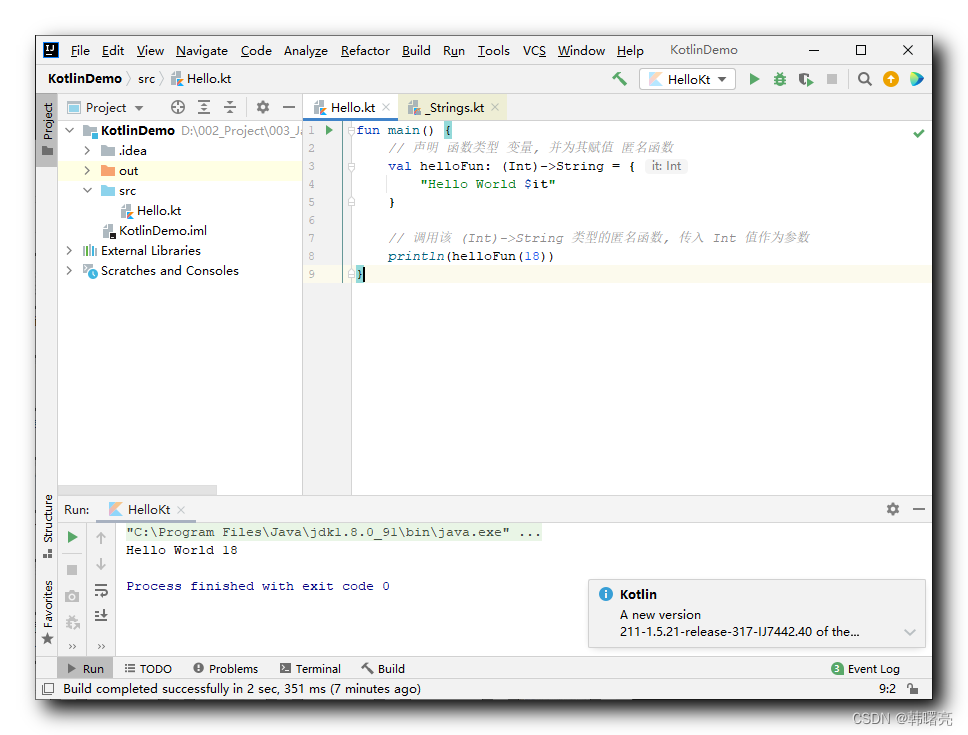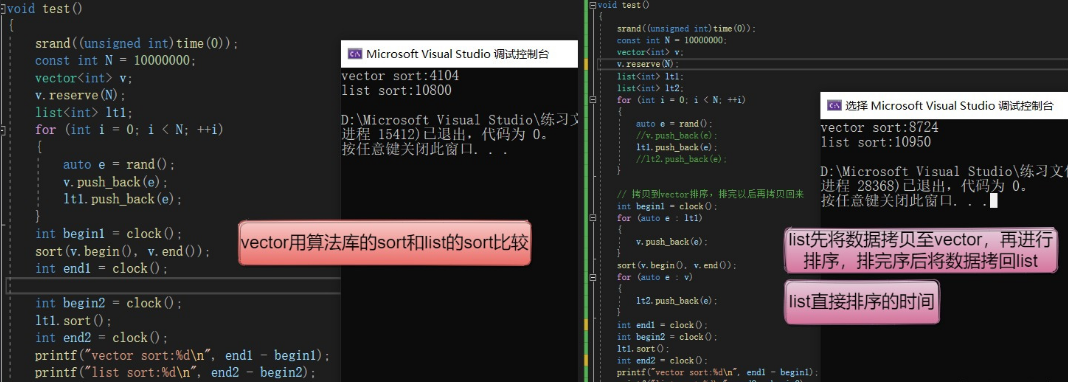一、简介
Tornado 是 FriendFeed 使用的可扩展的非阻塞式 web 服务器及其相关工具的开源版本。这个 Web 框架看起来有些像web.py 或者 Google 的 webapp,不过为了能有效利用非阻塞式服务器环境,这个 Web 框架还包含了一些相关有用工具及优化。
Tornado 和现在的主流 Web 服务器框架(包括大多数 Python 的框架)有着明显的区别:它是非阻塞式服务器,而且速度相当快。得利于其非阻塞的方式和对 epoll 的运用,Tornado 每秒可以处理数以千计的连接,这就意味着对于实时的 Web 服务来说,Tornado 是一个理想的 Web 框架。开发这个 Web 服务器的主要目的就是为了处理 FriendFeed 的实时功能 ——在 FriendFeed 的应用里每一个活动用户都会保持着一个服务器连接。
下载和安装
pip安装
pip3 install tornado
源码安装
tar xvzf tornado-4.4.1.tar.gz
cd tornado-4.4.1
python setup.py build
sudo python setup.py installTornado 各模块
主要模块
web - FriendFeed 使用的基础 Web 框架,包含了 Tornado 的大多数重要的功能
escape - XHTML, JSON, URL 的编码/解码方法
database - 对 MySQLdb 的简单封装,使其更容易使用
template - 基于 Python 的 web 模板系统
httpclient - 非阻塞式 HTTP 客户端,它被设计用来和 web 及 httpserver 协同工作
auth - 第三方认证的实现(包括 Google OpenID/OAuth、Facebook Platform、Yahoo BBAuth、FriendFeed OpenID/OAuth、Twitter OAuth)
locale - 针对本地化和翻译的支持
options - 命令行和配置文件解析工具,针对服务器环境做了优化
底层模块
httpserver - 服务于 web 模块的一个非常简单的 HTTP 服务器的实现
iostream - 对非阻塞式的 socket 的简单封装,以方便常用读写操作
ioloop - 核心的 I/O 循环二、Hello, world
"Hello, world" 及 Application settings 基本配置:
import tornado.ioloop
import tornado.web
# import uimodules as md
# import uimethods as mt
class MainHandler(tornado.web.RequestHandler):
def get(self):
self.write("Hello, world")
settings = {
'template_path': 'views', # html文件
'static_path': 'statics', # 静态文件(css,js,img)
'static_url_prefix': '/statics/',# 静态文件前缀
'cookie_secret': 'suoning', # cookie自定义字符串加盐
# 'xsrf_cookies': True, # 防止跨站伪造
# 'ui_methods': mt, # 自定义UIMethod函数
# 'ui_modules': md, # 自定义UIModule类
}
application = tornado.web.Application([
(r"/", MainHandler),
], **settings)
if __name__ == "__main__":
application.listen(8888)
tornado.ioloop.IOLoop.instance().start()三、方法
1、处理程序和参数
请求来时,程序会用正则匹配相应路由地址,并交付于 tornado.web.RequestHandler 的子类处理;子类会根据请求方式(post / get / delete ...)的不同调用并执行相应的方法,方法返回字符串内容并发送到浏览器。
self.write("<h1>Hello, World</h1>") # html代码直接写在浏览器客户端
self.render("index.html") # 返回html文件,调用render_string(),内部其实是打开并读取文件,返回内容
self.redirect("http://www.cnblogs.com/suoning",permanent=False) # 跳转重定向,参数代表是否永久重定向
name = self.get_argument("name") # 获取客户端传入的参数值
name = self.get_arguments("name") # 获取多个值,类别形式
file = self.request.files["filename"] # 获取客户端上传的文件
raise tornado.web.HTTPError(403) # 返回错误信息给客户端2、重写 RequestHandler 的方法函数
对于一个请求的处理过程代码调用次序如下:
- 程序为每一个请求创建一个 RequestHandler 对象;
- 程序调用
initialize()函数,这个函数的参数是Application配置中的关键字参数定义。(initialize方法是 Tornado 1.1 中新添加的,旧版本中你需要重写__init__以达到同样的目的)initialize方法一般只是把传入的参数存到成员变量中,而不会产生一些输出或者调用像send_error之类的方法。 - 程序调用
prepare()。无论使用了哪种 HTTP 方法,prepare都会被调用到,因此这个方法通常会被定义在一个基类中,然后在子类中重用。prepare可以产生输出信息。如果它调用了finish(或send_error` 等函数),那么整个处理流程就此结束。 - 程序调用某个 HTTP 方法:例如
get()、post()、put()等。如果 URL 的正则表达式模式中有分组匹配,那么相关匹配会作为参数传入方法。
重写 initialize() 函数(会在创建RequestHandler对象后调用):
class ProfileHandler(tornado.web.RequestHandler):
def initialize(self,database):
self.database = database
def get(self):
self.write("result:" + self.database)
application = tornado.web.Application([
(r"/init", ProfileHandler, dict(database="database"))
])四、模板引擎
Tornao中的模板语言和django中类似,模板引擎将模板文件载入内存,然后将数据嵌入其中,最终获取到一个完整的字符串,再将字符串返回给请求者。
Tornado 的模板支持“控制语句”和“表达语句”,控制语句是使用 {% 和 %} 包起来的 例如 {% if len(items) > 2 %}。表达语句是使用 {{ 和 }} 包起来的,例如 {{ items[0] }}。
控制语句和对应的 Python 语句的格式基本完全相同。我们支持 if、for、while 和 try,这些语句逻辑结束的位置需要用 {% end %} 做标记。还通过 extends 和 block 语句实现了模板继承。这些在 template 模块 的代码文档中有着详细的描述。
注:在使用模板前需要在setting中设置模板路径:"template_path" : "views"
1、基本使用
app.py
#!/usr/bin/env python
# -*- coding:utf-8 -*-
import tornado.ioloop
import tornado.web
class MainHandler(tornado.web.RequestHandler):
def get(self):
self.render("index.html", list_info = [11,22,33])
application = tornado.web.Application([
(r"/index", MainHandler),
])
if __name__ == "__main__":
application.listen(8888)
tornado.ioloop.IOLoop.instance().start()index.html
<!DOCTYPE html>
<html>
<head>
<meta http-equiv="Content-Type" content="text/html; charset=UTF-8"/>
<title>Nick</title>
</head>
<body>
<div>
<ul>
{% for item in list_info %}
<li>{{item}}</li>
{% end %}
</ul>
</div>
</body>
</html>其他方法
在模板中默认提供了一些函数、字段、类以供模板使用:
escape: tornado.escape.xhtml_escape 的別名
xhtml_escape: tornado.escape.xhtml_escape 的別名
url_escape: tornado.escape.url_escape 的別名
json_encode: tornado.escape.json_encode 的別名
squeeze: tornado.escape.squeeze 的別名
linkify: tornado.escape.linkify 的別名
datetime: Python 的 datetime 模组
handler: 当前的 RequestHandler 对象
request: handler.request 的別名
current_user: handler.current_user 的別名
locale: handler.locale 的別名
_: handler.locale.translate 的別名
static_url: for handler.static_url 的別名
xsrf_form_html: handler.xsrf_form_html 的別名2、母版
layout.html
<!DOCTYPE html>
<html>
<head>
<meta http-equiv="Content-Type" content="text/html; charset=UTF-8"/>
<title>Nick</title>
<link href="{{static_url("css/common.css")}}" rel="stylesheet" />
{% block CSS %}{% end %}
</head>
<body>
<div class="pg-header">
</div>
{% block RenderBody %}{% end %}
<script src="{{static_url("js/jquery-1.8.2.min.js")}}"></script>
{% block JavaScript %}{% end %}
</body>
</html>index.html
{% extends 'layout.html'%}
{% block CSS %}
<link href="{{static_url("css/index.css")}}" rel="stylesheet" />
{% end %}
{% block RenderBody %}
<h1>Index</h1>
<ul>
{% for item in li %}
<li>{{item}}</li>
{% end %}
</ul>
{% end %}
{% block JavaScript %}
{% end %}3、导入
header.html
<div>
<ul>
<li>1024</li>
<li>42区</li>
</ul>
</div>index.html
<!DOCTYPE html>
<html>
<head>
<meta http-equiv="Content-Type" content="text/html; charset=UTF-8"/>
<title>Nick</title>
<link href="{{static_url("css/common.css")}}" rel="stylesheet" />
</head>
<body>
<div class="pg-header">
{% include 'header.html' %}
</div>
<script src="{{static_url("js/jquery-1.8.2.min.js")}}"></script>
</body>
</html>4、自定义UIMethod以UIModule
a.定义
uimethods.py
# uimethods.py
def tab(self):
return 'UIMethod'uimodules.py
#!/usr/bin/env python
# -*- coding:utf-8 -*-
from tornado.web import UIModule
from tornado import escape
class custom(UIModule):
def render(self, *args, **kwargs):
return escape.xhtml_escape('<h1>nick</h1>')
#return escape.xhtml_escape('<h1>suoning</h1>')b.注册
View Code
#!/usr/bin/env python
# -*- coding:utf-8 -*-
import tornado.ioloop
import tornado.web
from tornado.escape import linkify
import uimodules as md
import uimethods as mt
class MainHandler(tornado.web.RequestHandler):
def get(self):
self.render('index.html')
settings = {
'template_path': 'template',
'static_path': 'static',
'static_url_prefix': '/static/',
'ui_methods': mt,
'ui_modules': md,
}
application = tornado.web.Application([
(r"/index", MainHandler),
], **settings)
if __name__ == "__main__":
application.listen(8009)
tornado.ioloop.IOLoop.instance().start()c.使用
View Code
<!DOCTYPE html>
<html>
<head lang="en">
<meta charset="UTF-8">
<title>Nick</title>
<link href="{{static_url("commons.css")}}" rel="stylesheet" />
</head>
<body>
<h1>hello</h1>
{% module custom(123) %}
{{ tab() }}
</body>五、静态文件和主动式文件缓存
在应用配置 settings 中指定 static_path 选项来提供静态文件服务;
在应用配置 settings 中指定 static_url_prefix 选项来提供静态文件前缀服务;
在导入静态文件时用 {{static_url('XX.css')}} 方式实现主动缓存静态文件
settings = {
'template_path': 'views',
'static_path': 'static',
'static_url_prefix': '/static/',
}
<head lang="en">
<title>Nick</title>
<link href="{{static_url("commons.css")}}" rel="stylesheet" />
</head>六、 Cookie
1、基本Cookie
set_cookie 方法在用户的浏览中设置 cookie;
get_cookie 方法在用户的浏览中获取 cookie。
class MainHandler(tornado.web.RequestHandler):
def get(self):
if not self.get_cookie("mycookie"):
self.set_cookie("mycookie", "myvalue")
self.write("Your cookie was not set yet!")
else:
self.write("Your cookie was set!")2、加密Cookie(签名)
Cookie 很容易被恶意的客户端伪造。加入你想在 cookie 中保存当前登陆用户的 id 之类的信息,你需要对 cookie 作签名以防止伪造。Tornado 通过 set_secure_cookie 和 get_secure_cookie 方法直接支持了这种功能。 要使用这些方法,你需要在创建应用时提供一个密钥,名字为 cookie_secret。 你可以把它作为一个关键词参数传入应用的设置中:
class MainHandler(tornado.web.RequestHandler):
def get(self):
if not self.get_secure_cookie("mycookie"):
self.set_secure_cookie("mycookie", "myvalue")
self.write("Your cookie was not set yet!")
else:
self.write("Your cookie was set!")
application = tornado.web.Application([
(r"/", MainHandler),
], cookie_secret="61oETzKXQAGaYdkL5gEmGeJJFuYh7EQnp2XdTP1o/Vo=")内部算法
def _create_signature_v1(secret, *parts):
hash = hmac.new(utf8(secret), digestmod=hashlib.sha1)
for part in parts:
hash.update(utf8(part))
return utf8(hash.hexdigest())
# 加密
def _create_signature_v2(secret, s):
hash = hmac.new(utf8(secret), digestmod=hashlib.sha256)
hash.update(utf8(s))
return utf8(hash.hexdigest())
def create_signed_value(secret, name, value, version=None, clock=None,
key_version=None):
if version is None:
version = DEFAULT_SIGNED_VALUE_VERSION
if clock is None:
clock = time.time
timestamp = utf8(str(int(clock())))
value = base64.b64encode(utf8(value))
if version == 1:
signature = _create_signature_v1(secret, name, value, timestamp)
value = b"|".join([value, timestamp, signature])
return value
elif version == 2:
# The v2 format consists of a version number and a series of
# length-prefixed fields "%d:%s", the last of which is a
# signature, all separated by pipes. All numbers are in
# decimal format with no leading zeros. The signature is an
# HMAC-SHA256 of the whole string up to that point, including
# the final pipe.
#
# The fields are:
# - format version (i.e. 2; no length prefix)
# - key version (integer, default is 0)
# - timestamp (integer seconds since epoch)
# - name (not encoded; assumed to be ~alphanumeric)
# - value (base64-encoded)
# - signature (hex-encoded; no length prefix)
def format_field(s):
return utf8("%d:" % len(s)) + utf8(s)
to_sign = b"|".join([
b"2",
format_field(str(key_version or 0)),
format_field(timestamp),
format_field(name),
format_field(value),
b''])
if isinstance(secret, dict):
assert key_version is not None, 'Key version must be set when sign key dict is used'
assert version >= 2, 'Version must be at least 2 for key version support'
secret = secret[key_version]
signature = _create_signature_v2(secret, to_sign)
return to_sign + signature
else:
raise ValueError("Unsupported version %d" % version)
# 解密
def _decode_signed_value_v1(secret, name, value, max_age_days, clock):
parts = utf8(value).split(b"|")
if len(parts) != 3:
return None
signature = _create_signature_v1(secret, name, parts[0], parts[1])
if not _time_independent_equals(parts[2], signature):
gen_log.warning("Invalid cookie signature %r", value)
return None
timestamp = int(parts[1])
if timestamp < clock() - max_age_days * 86400:
gen_log.warning("Expired cookie %r", value)
return None
if timestamp > clock() + 31 * 86400:
# _cookie_signature does not hash a delimiter between the
# parts of the cookie, so an attacker could transfer trailing
# digits from the payload to the timestamp without altering the
# signature. For backwards compatibility, sanity-check timestamp
# here instead of modifying _cookie_signature.
gen_log.warning("Cookie timestamp in future; possible tampering %r",
value)
return None
if parts[1].startswith(b"0"):
gen_log.warning("Tampered cookie %r", value)
return None
try:
return base64.b64decode(parts[0])
except Exception:
return None
def _decode_fields_v2(value):
def _consume_field(s):
length, _, rest = s.partition(b':')
n = int(length)
field_value = rest[:n]
# In python 3, indexing bytes returns small integers; we must
# use a slice to get a byte string as in python 2.
if rest[n:n + 1] != b'|':
raise ValueError("malformed v2 signed value field")
rest = rest[n + 1:]
return field_value, rest
rest = value[2:] # remove version number
key_version, rest = _consume_field(rest)
timestamp, rest = _consume_field(rest)
name_field, rest = _consume_field(rest)
value_field, passed_sig = _consume_field(rest)
return int(key_version), timestamp, name_field, value_field, passed_sig
def _decode_signed_value_v2(secret, name, value, max_age_days, clock):
try:
key_version, timestamp, name_field, value_field, passed_sig = _decode_fields_v2(value)
except ValueError:
return None
signed_string = value[:-len(passed_sig)]
if isinstance(secret, dict):
try:
secret = secret[key_version]
except KeyError:
return None
expected_sig = _create_signature_v2(secret, signed_string)
if not _time_independent_equals(passed_sig, expected_sig):
return None
if name_field != utf8(name):
return None
timestamp = int(timestamp)
if timestamp < clock() - max_age_days * 86400:
# The signature has expired.
return None
try:
return base64.b64decode(value_field)
except Exception:
return None
def get_signature_key_version(value):
value = utf8(value)
version = _get_version(value)
if version < 2:
return None
try:
key_version, _, _, _, _ = _decode_fields_v2(value)
except ValueError:
return None
return key_version加密Cookice的本质:
写cookie过程:
- 将值进行base64加密
- 对除值以外的内容进行签名,哈希算法(无法逆向解析)
- 拼接 签名 + 加密值
读cookie过程:
- 读取 签名 + 加密值
- 对签名进行验证
- base64解密,获取值内容
注:许多API验证机制和安全cookie的实现机制相同。
基于Cookie实现用户验证-Demo
#!/usr/bin/env python
# -*- coding:utf-8 -*-
import tornado.ioloop
import tornado.web
class MainHandler(tornado.web.RequestHandler):
def get(self):
login_user = self.get_secure_cookie("login_user", None)
if login_user:
self.write(login_user)
else:
self.redirect('/login')
class LoginHandler(tornado.web.RequestHandler):
def get(self):
self.current_user()
self.render('login.html', **{'status': ''})
def post(self, *args, **kwargs):
username = self.get_argument('name')
password = self.get_argument('pwd')
if username == 'nick' and password == 'nicknick':
self.set_secure_cookie('login_user', 'nick')
self.redirect('/')
else:
self.render('login.html', **{'status': '用户名或密码错误'})
settings = {
'template_path': 'template',
'static_path': 'static',
'static_url_prefix': '/static/',
'cookie_secret': 'aiuasdhflashjdfoiuashdfiuh'
}
application = tornado.web.Application([
(r"/index", MainHandler),
(r"/login", LoginHandler),
], **settings)
if __name__ == "__main__":
application.listen(8888)
tornado.ioloop.IOLoop.instance().start()基于签名Cookie实现用户验证-Demo
#!/usr/bin/env python
# -*- coding:utf-8 -*-
import tornado.ioloop
import tornado.web
class BaseHandler(tornado.web.RequestHandler):
def get_current_user(self):
return self.get_secure_cookie("login_user")
class MainHandler(BaseHandler):
@tornado.web.authenticated
def get(self):
login_user = self.current_user
self.write(login_user)
class LoginHandler(tornado.web.RequestHandler):
def get(self):
self.current_user()
self.render('login.html', **{'status': ''})
def post(self, *args, **kwargs):
username = self.get_argument('name')
password = self.get_argument('pwd')
if username == 'nick' and password == 'nicknick':
self.set_secure_cookie('login_user', 'nick')
self.redirect('/')
else:
self.render('login.html', **{'status': '用户名或密码错误'})
settings = {
'template_path': 'template',
'static_path': 'static',
'static_url_prefix': '/static/',
'cookie_secret': 'aiuasdhflashjdfoiuashdfiuh',
'login_url': '/login'
}
application = tornado.web.Application([
(r"/index", MainHandler),
(r"/login", LoginHandler),
], **settings)
if __name__ == "__main__":
application.listen(8888)
tornado.ioloop.IOLoop.instance().start()3、JavaScript操作Cookie
由于Cookie保存在浏览器端,所以在浏览器端也可以使用JavaScript来操作Cookie
/*
设置cookie,指定秒数过期
*/
function setCookie(name,value,expires){
var temp = [];
var current_date = new Date();
current_date.setSeconds(current_date.getSeconds() + 5);
document.cookie = name + "= "+ value +";expires=" + current_date.toUTCString();
}对于参数:
- domain 指定域名下的cookie
- path 域名下指定url中的cookie
- secure https使用
注:jQuery中也有指定的插件 jQuery Cookie 专门用于操作cookie
七、用户认证
当前已经认证的用户信息都被保存在每一个请求处理器的 self.current_user 当中, 同时在模板的 current_user 中也是。默认情况下,current_user 为 None。
要在应用程序实现用户认证的功能,你需要重写请求处理中 get_current_user() 这 个方法,在其中判定当前用户的状态,比如通过 cookie。下面的例子让用户简单地使用一个 nickname 登陆应用,该登陆信息将被保存到 cookie 中:
class BaseHandler(tornado.web.RequestHandler):
def get_current_user(self):
return self.get_secure_cookie("user")
class MainHandler(BaseHandler):
def get(self):
if not self.current_user:
self.redirect("/login")
return
name = tornado.escape.xhtml_escape(self.current_user)
self.write("Hello, " + name)
class LoginHandler(BaseHandler):
def get(self):
self.write('<html><body><form action="/login" method="post">'
'Name: <input type="text" name="name">'
'<input type="submit" value="Sign in">'
'</form></body></html>')
def post(self):
self.set_secure_cookie("user", self.get_argument("name"))
self.redirect("/")
application = tornado.web.Application([
(r"/", MainHandler),
(r"/login", LoginHandler),
], cookie_secret="61oETzKXQAGaYdkL5gEmGeJJFuYh7EQnp2XdTP1o/Vo=")对于那些必须要求用户登陆的操作,可以使用装饰器 tornado.web.authenticated。 如果一个方法套上了这个装饰器,但是当前用户并没有登陆的话,页面会被重定向到 login_url(应用配置中的一个选项),上面的例子可以被改写成:
class MainHandler(BaseHandler):
@tornado.web.authenticated
def get(self):
name = tornado.escape.xhtml_escape(self.current_user)
self.write("Hello, " + name)
settings = {
"cookie_secret": "61oETzKXQAGaYdkL5gEmGeJJFuYh7EQnp2XdTP1o/Vo=",
"login_url": "/login",
}
application = tornado.web.Application([
(r"/", MainHandler),
(r"/login", LoginHandler),
], **settings)如果你使用 authenticated 装饰器来装饰 post() 方法,那么在用户没有登陆的状态下, 服务器会返回 403 错误。
Tornado 内部集成了对第三方认证形式的支持,比如 Google 的 OAuth 。参阅 auth 模块 的代码文档以了解更多信息。 for more details. Checkauth 模块以了解更多的细节。在 Tornado 的源码中有一个 Blog 的例子,你也可以从那里看到 用户认证的方法(以及如何在 MySQL 数据库中保存用户数据)。
八、CSRF 跨站伪造请求的防范
跨站伪造请求(Cross-site request forgery), 简称为 XSRF,是个性化 Web 应用中常见的一个安全问题。前面的链接也详细讲述了 XSRF 攻击的实现方式。
当前防范 XSRF 的一种通用的方法,是对每一个用户都记录一个无法预知的 cookie 数据,然后要求所有提交的请求中都必须带有这个 cookie 数据。如果此数据不匹配 ,那么这个请求就可能是被伪造的。
Tornado 有内建的 XSRF 的防范机制,要使用此机制,你需要在应用配置中加上 xsrf_cookies 设定:
settings = {
"cookie_secret": "61oETzKXQAGaYdkL5gEmGeJJFuYh7EQnp2XdTP1o/Vo=",
"login_url": "/login",
"xsrf_cookies": True,
}
application = tornado.web.Application([
(r"/", MainHandler),
(r"/login", LoginHandler),
], **settings)如果设置了 xsrf_cookies,那么 Tornado 的 Web 应用将对所有用户设置一个 _xsrf 的 cookie 值,如果 POST PUT DELET 请求中没有这 个 cookie 值,那么这个请求会被直接拒绝。如果你开启了这个机制,那么在所有 被提交的表单中,你都需要加上一个域来提供这个值。你可以通过在模板中使用 专门的函数 xsrf_form_html() 来做到这一点:
<form action="/new_message" method="post">
{{ xsrf_form_html() }}
<input type="text" name="message"/>
<input type="submit" value="Post"/>
</form>如果你提交的是 AJAX 的 POST 请求,你还是需要在每一个请求中通过脚本添加上 _xsrf 这个值。下面是在 FriendFeed 中的 AJAX 的 POST 请求,使用了 jQuery 函数来为所有请求组东添加 _xsrf 值:
function getCookie(name) {
var r = document.cookie.match("\\b" + name + "=([^;]*)\\b");
return r ? r[1] : undefined;
}
jQuery.postJSON = function(url, args, callback) {
args._xsrf = getCookie("_xsrf");
$.ajax({url: url, data: $.param(args), dataType: "text", type: "POST",
success: function(response) {
callback(eval("(" + response + ")"));
}});
};对于 PUT 和 DELETE 请求(以及不使用将 form 内容作为参数的 POST 请求) 来说,你也可以在 HTTP 头中以 X-XSRFToken这个参数传递 XSRF token。
如果你需要针对每一个请求处理器定制 XSRF 行为,你可以重写 RequestHandler.check_xsrf_cookie()。例如你需要使用一个不支持 cookie 的 API, 你可以通过将 check_xsrf_cookie() 函数设空来禁用 XSRF 保护机制。然而如果 你需要同时支持 cookie 和非 cookie 认证方式,那么只要当前请求是通过 cookie 进行认证的,你就应该对其使用 XSRF 保护机制,这一点至关重要。
九、文件上传
1、Form表单上传
HTML
<!DOCTYPE html>
<html>
<head>
<meta http-equiv="Content-Type" content="text/html; charset=UTF-8"/>
<title>上传文件</title>
</head>
<body>
<form id="my_form" name="form" action="/index" method="POST" enctype="multipart/form-data" >
<input name="fff" id="my_file" type="file" />
<input type="submit" value="提交" />
</form>
</body>
</html>Python
#!/usr/bin/env python
# -*- coding:utf-8 -*-
import tornado.ioloop
import tornado.web
class MainHandler(tornado.web.RequestHandler):
def get(self):
self.render('index.html')
def post(self, *args, **kwargs):
file_metas = self.request.files["fff"]
# print(file_metas)
for meta in file_metas:
file_name = meta['filename']
with open(file_name,'wb') as up:
up.write(meta['body'])
settings = {
'template_path': 'template',
}
application = tornado.web.Application([
(r"/index", MainHandler),
], **settings)
if __name__ == "__main__":
application.listen(8000)
tornado.ioloop.IOLoop.instance().start()2、AJAX上传
HTML - XMLHttpRequest
<!DOCTYPE html>
<html>
<head lang="en">
<meta charset="UTF-8">
<title></title>
</head>
<body>
<input type="file" id="img" />
<input type="button" onclick="UploadFile();" />
<script>
function UploadFile(){
var fileObj = document.getElementById("img").files[0];
var form = new FormData();
form.append("k1", "v1");
form.append("fff", fileObj);
var xhr = new XMLHttpRequest();
xhr.open("post", '/index', true);
xhr.send(form);
}
</script>
</body>
</html>HTML - jQuery
<!DOCTYPE html>
<html>
<head lang="en">
<meta charset="UTF-8">
<title></title>
</head>
<body>
<input type="file" id="img" />
<input type="button" onclick="UploadFile();" />
<script>
function UploadFile(){
var fileObj = $("#img")[0].files[0];
var form = new FormData();
form.append("k1", "v1");
form.append("fff", fileObj);
$.ajax({
type:'POST',
url: '/index',
data: form,
processData: false, // tell jQuery not to process the data
contentType: false, // tell jQuery not to set contentType
success: function(arg){
console.log(arg);
}
})
}
</script>
</body>
</html>HTML - iframe
<!DOCTYPE html>
<html>
<head lang="en">
<meta charset="UTF-8">
<title></title>
</head>
<body>
<form id="my_form" name="form" action="/index" method="POST" enctype="multipart/form-data" >
<div id="main">
<input name="fff" id="my_file" type="file" />
<input type="button" name="action" value="Upload" onclick="redirect()"/>
<iframe id='my_iframe' name='my_iframe' src="" class="hide"></iframe>
</div>
</form>
<script>
function redirect(){
document.getElementById('my_iframe').onload = Testt;
document.getElementById('my_form').target = 'my_iframe';
document.getElementById('my_form').submit();
}
function Testt(ths){
var t = $("#my_iframe").contents().find("body").text();
console.log(t);
}
</script>
</body>
</html>Python
#!/usr/bin/env python
# -*- coding:utf-8 -*-
import tornado.ioloop
import tornado.web
class MainHandler(tornado.web.RequestHandler):
def get(self):
self.render('index.html')
def post(self, *args, **kwargs):
file_metas = self.request.files["fff"]
# print(file_metas)
for meta in file_metas:
file_name = meta['filename']
with open(file_name,'wb') as up:
up.write(meta['body'])
settings = {
'template_path': 'template',
}
application = tornado.web.Application([
(r"/index", MainHandler),
], **settings)
if __name__ == "__main__":
application.listen(8000)
tornado.ioloop.IOLoop.instance().start()扩展:基于iframe实现Ajax上传示例
<script type="text/javascript">
$(document).ready(function () {
$("#formsubmit").click(function () {
var iframe = $('<iframe name="postiframe" id="postiframe" style="display: none"></iframe>');
$("body").append(iframe);
var form = $('#theuploadform');
form.attr("action", "/upload.aspx");
form.attr("method", "post");
form.attr("encoding", "multipart/form-data");
form.attr("enctype", "multipart/form-data");
form.attr("target", "postiframe");
form.attr("file", $('#userfile').val());
form.submit();
$("#postiframe").load(function () {
iframeContents = this.contentWindow.document.body.innerHTML;
$("#textarea").html(iframeContents);
});
return false;
});
});
</script>
<form id="theuploadform">
<input id="userfile" name="userfile" size="50" type="file" />
<input id="formsubmit" type="submit" value="Send File" />
</form>
<div id="textarea">
</div>十、验证码
安装图像处理模块:pip3 install pillow
实例截图:
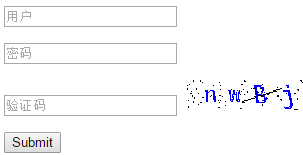
注意导入模块的路径
验证码实例 python文件
#!/usr/bin/env python
#-*- coding:utf-8 -*-
"""blog:http://www.cnblogs.com/suoning"""
__author__ = 'Nick Suo'
import tornado.web
import tornado.ioloop
import time
import hashlib
container = {}
class Session:
def __init__(self,handler):
self.handler = handler
self.random_str = None
def __genarte_randmo_str(self):
obj = hashlib.md5()
obj.update(bytes(str(time.time()), encoding='utf-8'))
random_str = obj.hexdigest()
return random_str
def __setitem__(self,key,value):
if not self.random_str:
random_str = self.handler.get_secure_cookie("__tt__")
if not random_str:
random_str = self.__genarte_randmo_str()
container[random_str] = {}
else:
if random_str not in container.keys():
random_str = self.__genarte_randmo_str()
container[random_str] = {}
self.random_str = random_str
container[self.random_str][key] = value
self.handler.set_secure_cookie("__tt__",self.random_str,expires_days=None)
def __getitem__(self,key):
randmon_str = self.handler.get_secure_cookie("__tt__")
randmon_str = str(randmon_str,encoding='utf-8')
if not randmon_str:
return None
user_info_dic = container.get(randmon_str,None)
if not user_info_dic:
return None
value = user_info_dic.get(key,None)
return value
class MyHandler(tornado.web.RequestHandler):
def initialize(self):
self.session = Session(self)
class LoginHandler(MyHandler):
def get(self, *args, **kwargs):
self.render('login2.html')
def post(self, *args, **kwargs):
name = self.get_argument('user',None)
pwd = self.get_argument('pwd',None)
code = self.get_argument('code',None)
if self.session['Check_Code'].upper() == code.upper():
self.write("successful")
else:
self.write("wrong")
class CheckcodeHandler(MyHandler):
def get(self, *args, **kwargs):
import io
import check_code
mstream = io.BytesIO()
img, code = check_code.create_validate_code() # 图片和图片上的码
img.save(mstream, "GIF")
self.session['Check_Code'] = code # 把验证码存入session
self.write(mstream.getvalue()) # 写入图片
settings = {
'template_path':'views',
'static_path':'statics',
'cookie_secret':'suoning',
}
application = tornado.web.Application([
(r'/login',LoginHandler),
(r'/check_code',CheckcodeHandler),
], **settings)
if __name__ == '__main__':
application.listen(8888)
tornado.ioloop.IOLoop.instance().start()验证码实例 HTML文件
<!DOCTYPE html>
<html lang="en">
<head>
<meta charset="UTF-8">
<title>Login by Nick</title>
</head>
<body>
<form method="post" action="/login">
<p><input name="user" type="text" placeholder="用户"/></p>
<p><input name='pwd' type="text" placeholder="密码"/></p>
<p>
<input name="code" type="text" placeholder="验证码"/>
<img src="/check_code" onclick='ChangeCode();' id='imgCode'>
</p>
<input type="submit" value="Submit" /> <span style="color:red"></span>
</form>
<script>
function ChangeCode() {
// 刷新图片
var code = document.getElementById('imgCode');
code.src += '?';
}
</script>
</body>
</html><!DOCTYPE html>
<html lang="en">
<head>
<meta charset="UTF-8">
<title>Login by Nick</title>
</head>
<body>
<form method="post" action="/login">
<p><input name="user" type="text" placeholder="用户"/></p>
<p><input name='pwd' type="text" placeholder="密码"/></p>
<p>
<input name="code" type="text" placeholder="验证码"/>
<img src="/check_code" onclick='ChangeCode();' id='imgCode'>
</p>
<input type="submit" value="Submit" /> <span style="color:red"></span>
</form>
<script>
function ChangeCode() {
// 刷新图片
var code = document.getElementById('imgCode');
code.src += '?';
}
</script>
</body>
</html>十一、非阻塞式异步请求
当一个处理请求的行为被执行之后,这个请求会自动地结束。因为 Tornado 当中使用了 一种非阻塞式的 I/O 模型,所以你可以改变这种默认的处理行为——让一个请求一直保持 连接状态,而不是马上返回,直到一个主处理行为返回。要实现这种处理方式,只需要使用 tornado.web.asynchronous 装饰器就可以了。
使用了这个装饰器之后,你必须调用 self.finish() 已完成 HTTTP 请求,否则 用户的浏览器会一直处于等待服务器响应的状态:
class MainHandler(tornado.web.RequestHandler):
@tornado.web.asynchronous
def get(self):
self.write("Hello, world")
self.finish()下面是一个使用 Tornado 内置的异步请求 HTTP 客户端去调用 FriendFeed 的 API 的例 子:
class MainHandler(tornado.web.RequestHandler):
@tornado.web.asynchronous
def get(self):
http = tornado.httpclient.AsyncHTTPClient()
http.fetch("http://friendfeed-api.com/v2/feed/bret",
callback=self.on_response)
def on_response(self, response):
if response.error: raise tornado.web.HTTPError(500)
json = tornado.escape.json_decode(response.body)
self.write("Fetched " + str(len(json["entries"])) + " entries "
"from the FriendFeed API")
self.finish()例子中,当 get() 方法返回时,请求处理还没有完成。在 HTTP 客户端执行它的回 调函数 on_response() 时,从浏览器过来的请求仍然是存在的,只有在显式调用了 self.finish() 之后,才会把响应返回到浏览器。
关于更多异步请求的高级例子,可以参阅 demo 中的 chat 这个例子。它是一个使用 long polling 方式 的 AJAX 聊天室。如果你使用到了 long polling,你可能需要复写on_connection_close(), 这样你可以在客户连接关闭以后做相关的清理动作。
十二、自定义Session
何为 Session?
是一种服务器端的机制,用于存储特定的用户会话所需的信息;必须依赖 cookice 。
Tornado 默认没有提供 Session 机制,我们可以自定义如下:
#!/usr/bin/env python
#-*- coding:utf-8 -*-
"""blog:http://www.cnblogs.com/suoning"""
__author__ = 'Nick Suo'
import tornado.web
import tornado.ioloop
import time
import hashlib
container = {} # 用于存放 Session,可放在数据库,缓存等地
class Session:
def __init__(self,handler):
"""
:param handler: 在 initialize 方法函数里初始化,传入当前对象self
:param handler: 客户端是否有指定 __ss__ flag
"""
self.handler = handler
self.random_str = None
def __genarte_randmo_str(self):
"""
以当前时间戳生成随机字符串
:return: 返回随机字符串
"""
obj = hashlib.md5()
obj.update(bytes(str(time.time()), encoding='utf-8'))
random_str = obj.hexdigest()
return random_str
def __setitem__(self,key,value):
"""
设置 session 方法函数
:param key: 设置的 key
:param value: 设置的 value
"""
if not self.random_str:
random_str = self.handler.get_secure_cookie("__ss__")
if not random_str:
random_str = self.__genarte_randmo_str()
container[random_str] = {}
else:
if random_str not in container.keys():
random_str = self.__genarte_randmo_str()
container[random_str] = {}
self.random_str = random_str
container[self.random_str][key] = value
self.handler.set_secure_cookie("__ss__",self.random_str) # expires_days=None
def __getitem__(self,key):
"""
获取指定 session 方法函数
:param key: 要获取的 key
:return: 返回获取到的值
"""
randmon_str = self.handler.get_secure_cookie("__ss__")
randmon_str = str(randmon_str,encoding='utf-8')
if not randmon_str:
return None
user_info_dic = container.get(randmon_str, None)
if not user_info_dic:
return None
value = user_info_dic.get(key, None)
return value
class MyHandler(tornado.web.RequestHandler):
def initialize(self):
self.session = Session(self)
class IndexHandler(MyHandler):
def get(self, *args, **kwargs):
......
result = self.session["name"] # 获取 Session 方法函数
self.session['name'] = "Nick" # 设置 Session 方法函数
settings = {
'template_path':'views',
'static_path':'statics',
'cookie_secret':'suoning..................',
}
application = tornado.web.Application([
(r'/index',IndexHandler),
], **settings)
if __name__ == '__main__':
application.listen(8888)
tornado.ioloop.IOLoop.instance().start()